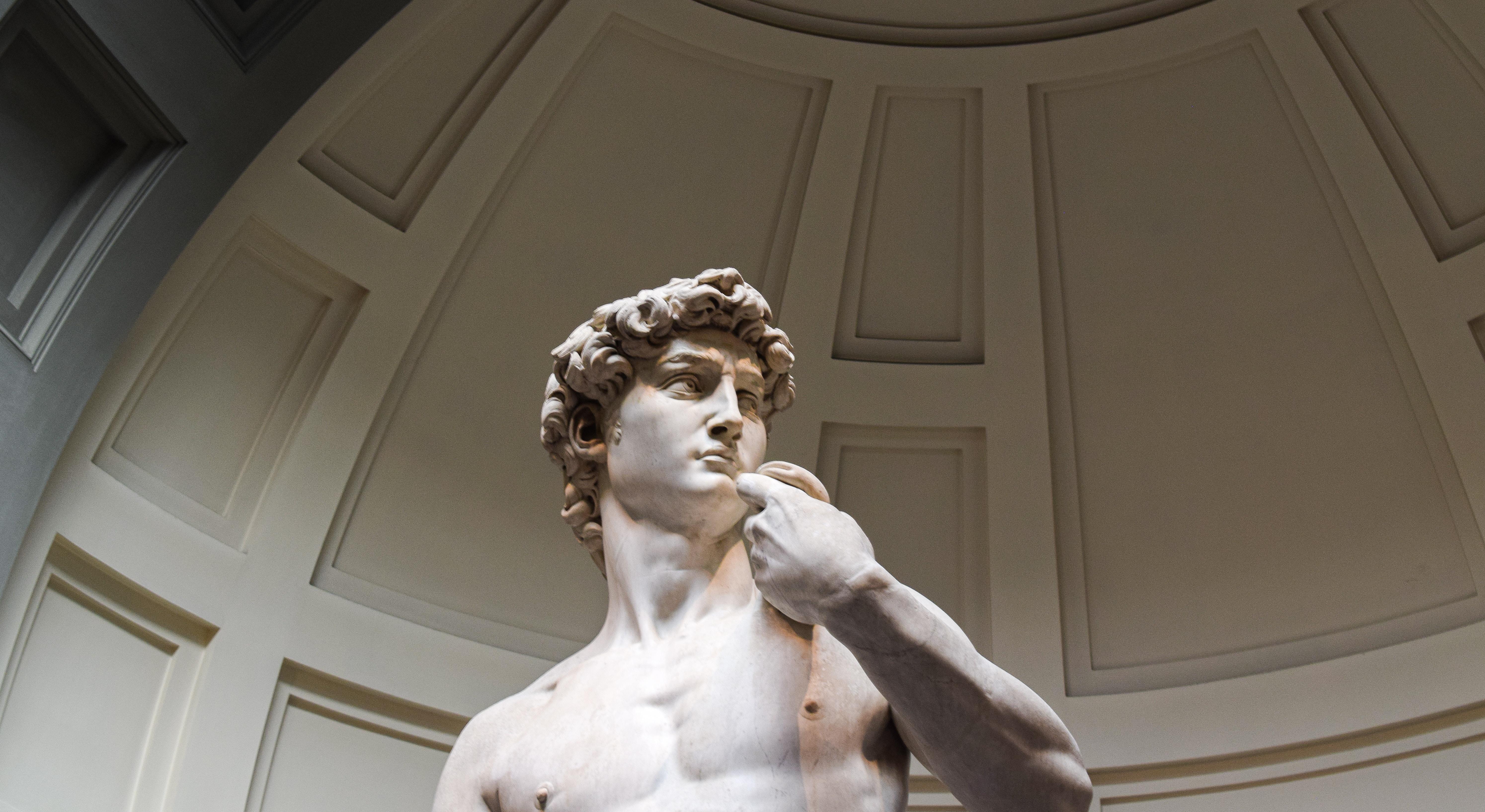Listing the greatest sculptures of all time is no easy task—it sparks debate, invites disagreement, and inevitably leaves something out. Yet, certain sculptural works have defined key moments in art history, while others have become universally recognizable symbols of power, identity, beauty, or devotion. From ancient carvings to contemporary masterpieces, sculpture has served as more than just artistic expression; it has embodied prestige, spirituality, and cultural memory. In this collection, we explore some of the most iconic and influential sculptures ever created—monumental works that continue to inspire and captivate audiences worldwide.
| 🗿Statue | 👩🏼🎨 Artist | 🌎 Where to see it |
|---|---|---|
| The Great Sphinx of Giza | Likely by ancient Egyptians | Giza Necropolis |
| Statue of Zeus at Olympia | Phidias | The Hemitage, St Petersburg (replica only; the original was destroyed) |
| Nike of Samothrace | Unknown | The Louvre Museum, Paris, France |
| Lewis Chesssmen | Unknown (Norse origin) | The National Museum of Scotland |
| David by Michelangelo | Michelangelo | Galleria dell'Accademia di Firenze, Florence, Italy |
| Ecstasy of Santa Teresa | Gian Lorenzo Bernini | Church of Santa Maria della Vittoria, Rome, Italy |
| Psyche Revived by Cupid's Kiss | Antonio Canova | The Louvre Museum, Paris, France |
| Statue of Liberty | Frédéric August Bartholdi | New York, NY |
| The Thinker | Auguste Rodin | Musée Rodin, Paris, France |
| Christ the Redeemer | Paul Landowski (sculptor), Heitor da Silva Costa (engineer) | Rio de Janeiro, Brazil |
| Venus of Willendorf | Unknown | Natural History Museum, Vienna, Austria |
| Terracotta Army | Unknown (Qin Dynasty artisans) | Xi'an, China |
| Moai Statues | Rapa Nui people | Easter Island, Chile |
| The Pieta of Saint Peter's | Michelangelo | St. Peter's Basilica, Vatican City |
| Mother Ukraine | Yevgeny Vuchetich | Kyiv, Ukraine |
| Spring Temple Buddha | Unknown | Henan, China |

The Great Sphinx of Giza
🌏 Location: Giza Necropolis
📆 Date of Creation: Around 2500 BC
Whilst not the earliest of ancient sculptures – with the sculptures and figurines of the Paleolithic and Upper Paleolithic and from Mesopotamia – the Sphinx is one of the most recognizable sculptures to ever have existed. This statue from ancient Egypt is also one of the iconic images of the ancient world.
Over 14 million people visit the Great Sphinx and the Pyramids of Giza each year!
The sphinx is a mythical creature – with the body of a lion and the head of a human – and its face in this instance is thought to represent that of Pharaoh Khafre, who reigned between 2558 and 2532 BC.
It’s thought to be a figure for the worship of the sun. Yet, the fact that its face represents the Pharaoh shows the intertwinement of secular power and spiritual. From the very beginning of sculpture development, colossal images have been created for a variety of purposes.
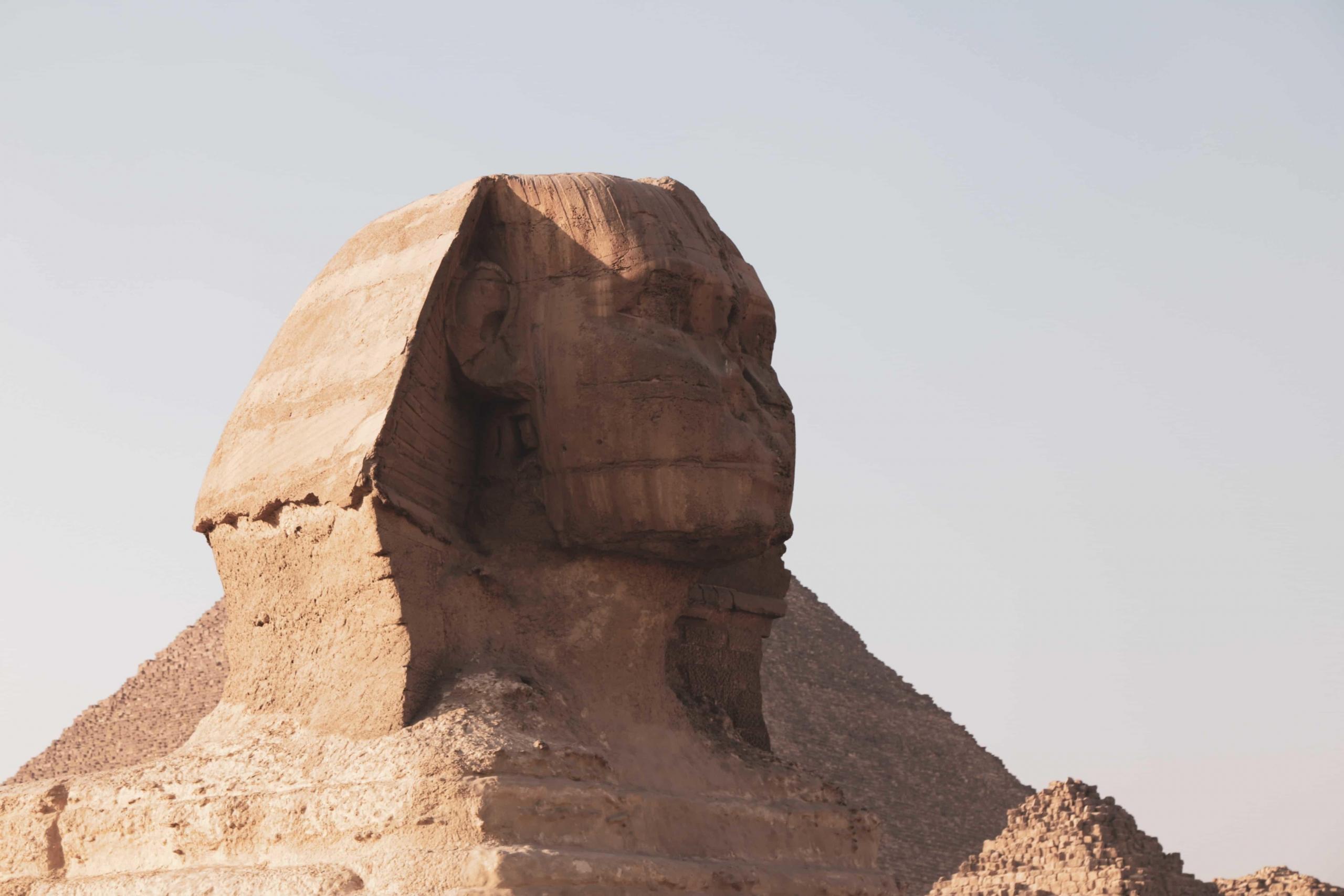
Statue of Zeus at Olympia
🌎 Location: Olympia, Greece
📆 Date of Creation: 466 BC
This one is a bit of a controversial one because, in the history of western art, this may be one of the most influential sculptures, but it is also one that we have never seen.

One of the Seven Wonders of the Ancient World, this sculpture was apparently over forty feet tall and made of gold and ivory.
The statue was made in Ancient Greece, by the sculptor, Phidias, one of the most important names in Greek sculpture. His influence on the art world has been huge: he is considered one of the major influences on Hellenistic sculptural design – and his work influences all Greek and Roman art after him.
The figurative sculpture depicted Zeus – the king of the Greek deities – sat upon a large throne. The belief of the art historian is that the temple in which the statue sat was destroyed by fire in the fourth century – with the statue itself irremediably damaged.
Colossus of Rhodes, Great Pyramid of Giza, Hanging Gardens of Babylon, Statue of Zeus at Olympia, Temple of Artemis at Ephesus, Mausoleum at Halicarnassus, and Lighthouse of Alexandria
Nike of Samothrace
🌎 Location: The Louvre, Paris
📆 Date of Creation: 190 BC
Of all the masterpieces of ancient art that still survive, there are few that are more influential for the arts than the Nike of Samothrace. This sculpture depicts the Greek god of victory, Nike.
Today, it is headless. However, the sculpture represents the peak of figurative sculpture of the ancient art world. There are a huge number of replicas – in parks and the odd museum of art across the world – of this testament to the artistic skill of ancient civilizations.
And what makes it particularly interesting is that it is one of the few Greek sculptures that survives – rather than just a replica from Roman art.
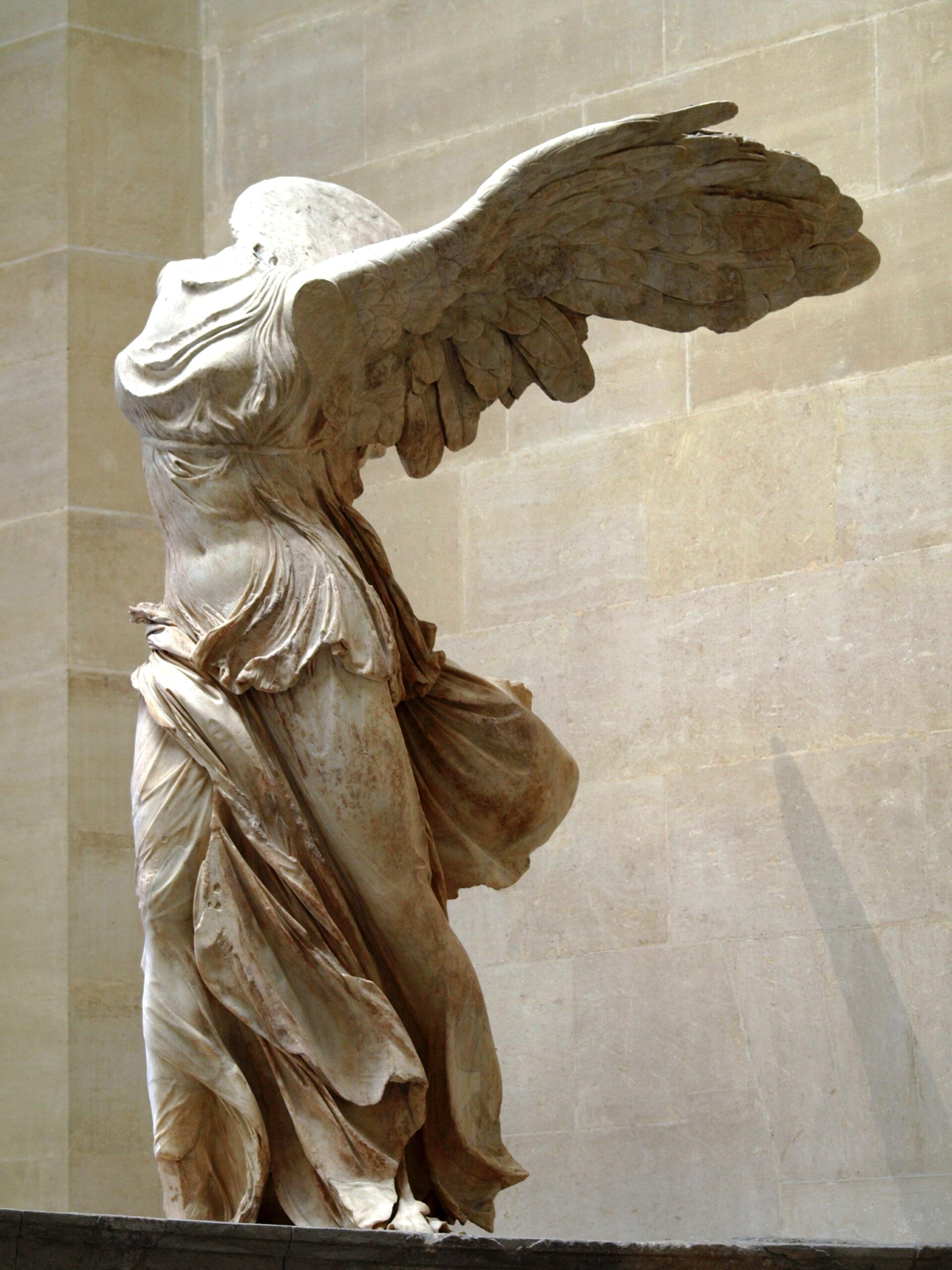
In itself, it is a beautiful sculpture that makes the most of the three dimensions that characterize the form. Rather than mere reliefs, this sculpture engages with the space around it – in a way that wouldn’t happen again until the High Renaissance.
Lewis Chessmen
🌎 Location: The National Museum of Scotland
📆 Date of Creation: 1200
The Lewis Chessmen are probably the most famous representatives of the sculptural tradition that existed in Europe outside of the Romanesque tradition that led to the Italian Renaissance.
The chess pieces are beautiful examples of small sculptures, and are thought to have been by sculptors in Trondheim, Norway. However, they were discovered on the Scottish island of Lewis in the Outer Hebrides.
Depicting the whole team of chessmen, the pieces are made of walrus ivory and whales’ teeth.
David by Michelangelo
🌎 Location: Galleria dell'Accademia di Firenze, Florence
📆 Date of Creation: 1501-1504
To modern and contemporary eyes, Michelangelo’s figure sculpture, David, may well be the most recognized representational piece ever to have existed.
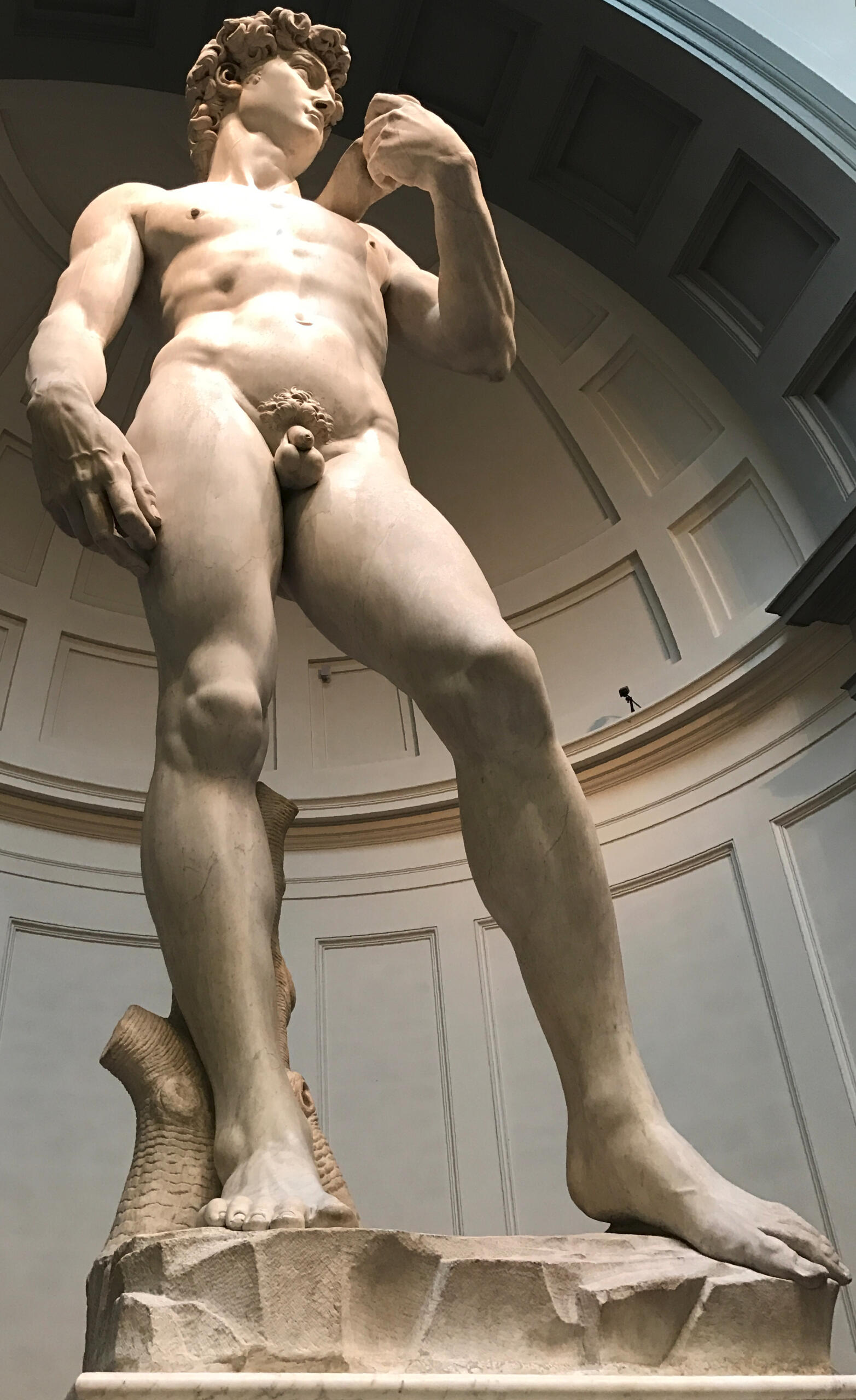
In the period of Donatello and Leonardo da Vinci, Michelangelo pushed the art of sculpture to its most beautifully naturalistic, elegant, and anatomically accurate state.
Made of white marble, the statue was admired by artists and painters – and it influenced all types of outdoor sculpture and religious sculpture since.
A classicist in style, Michelangelo developed the ways of doing sculpture that would influence everyone up to contemporary artists. And if you don’t know this sculpture, you’ve got a lot to learn!
Learn more about history's most famous sculpture artists!
Ecstasy of Santa Teresa
🌎 Location: Church of Santa Maria della Vittoria, Rome
📆 Date of Creation: 1644 - 1647
Capturing, and taking to their zenith, the Baroque principles of design, the Ecstasy of Santa Teresa by Gian Lorenzo Bernini rests in a church in Rome.
It has been a huge influence on modern art and various styles with its use of dynamism, characters in movement, and its engagement with its surrounding space.
It’s a bit of a controversial piece – as characterized in a famous Dan Brown novel – as there is something quite sensual about the position of the saint’s body.

Trevi Fountain
🌎 Location: Rome, Italy
📆 Date of Creation: 1732
Remaining in Rome, the Trevi Fountain needs to have a place in this list. With its equestrian figures, gushing streams, and powerful swirling lines, this mammoth water feature is the most famous fountain in the world.
However, as this piece is not in an art museum or in one of the city’s cathedrals – but rather in the center of town – it is often heaving with selfie-stick wielding tourists capturing its gorgeous whiteness.
It is a piece of public art, commissioned originally by the Pope, and the resulting design was chosen through a competition. Again, this is sculpture used to show off prestige and power. Yet, given that the whole thing was influenced by the genius Bernini, it’s at least quite a stunning testament to wealth.
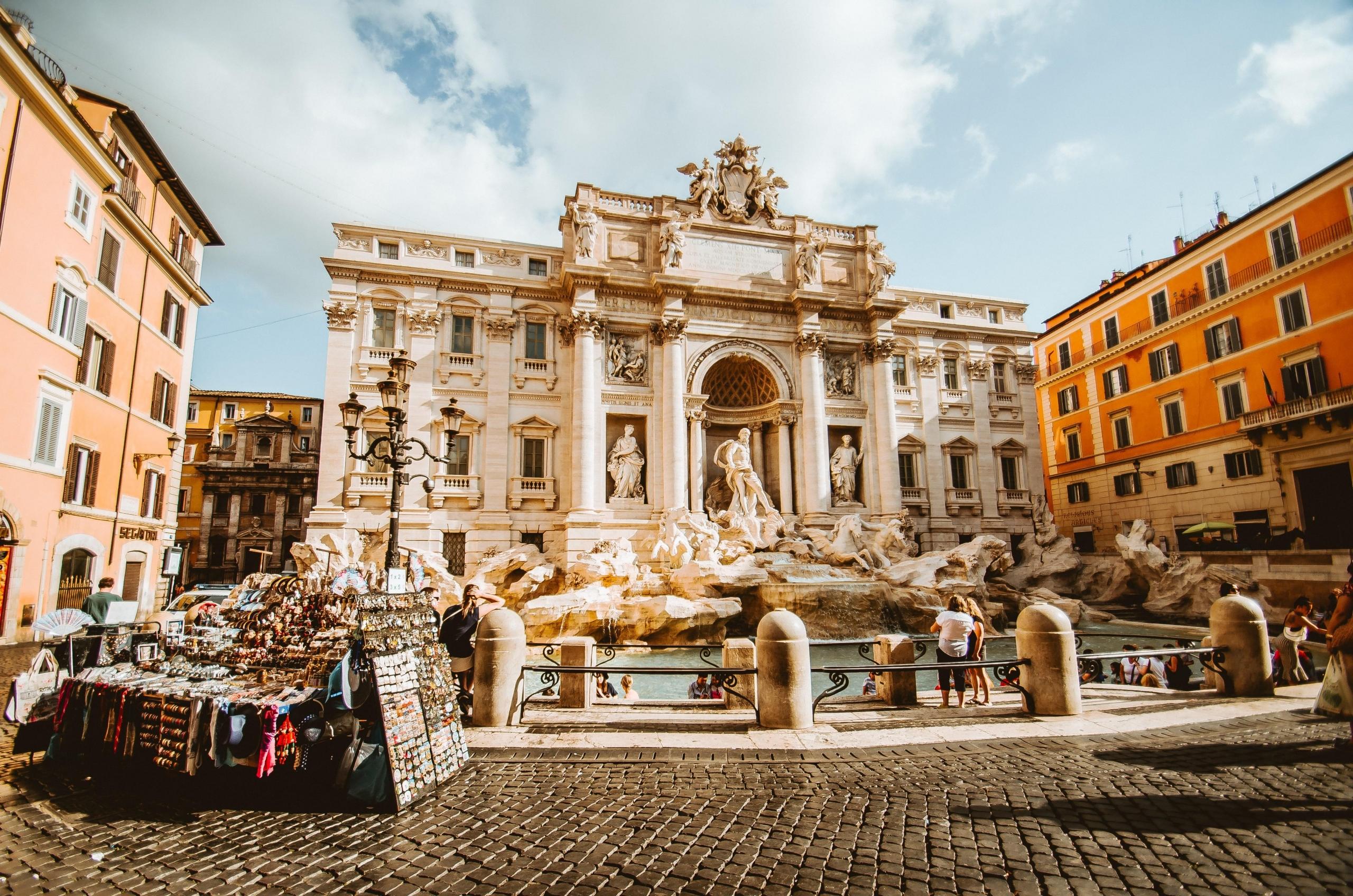
Psyche Revived by Cupid’s Kiss
🌎 Location: Louvre, Paris
📆 Date of Creation: 1793
One of our personal favorites in this list is the marble sculpture by Antonio Canova known as Psyche Revived by Cupid’s Kiss.
Depicting the Greek gods in passionate movement, Canova’s statue is absolutely representative of the neoclassical – and emerging, Romantic – movements of his age. It is famous for having no single preferred viewpoint – with action happening at all different perspectives.
You’ll find it in the Louvre - one of the world's most important sculpture collections - with pretty much everything else.
There are over 35,000 works of art and 500,000 objects in the Louvre.

Statue of Liberty
🌎 Location: New York, NY, USA
📆 Date of Creation: 1876
In terms of sculpture as a public art project, the Statue of Liberty is the most iconic, the most politically explicit, and obviously the most famous.
Stood on Liberty Island at the entrance to the docks of New York, this site specific work was intended to remind visitors and immigrants arriving by boat of the central values of the United States of America.
It is, quite frankly, absolutely colossal, and it serves more as a political statement than an actually nice piece of art. However, as famous sculptures go, this is probably the most famous you’re going to get.
The Thinker
🌏 Location: Musée Rodin, Paris
📆 Date of Creation: 1904
Probably the most influential sculptor of the last two hundred years, Auguste Rodin brought modernism into sculpture and developed the artistic language that would go on to influence all of the aspects of abstract sculpture and contemporary sculpture: kinetic sculpture, glass sculpture, architectural sculpture, landscape gardens, paper sculpture and the like.
Whilst Rodin himself didn’t experiment with medium and material as much as his successors would, his impressionistic style took the pompous posing out of the art for good.
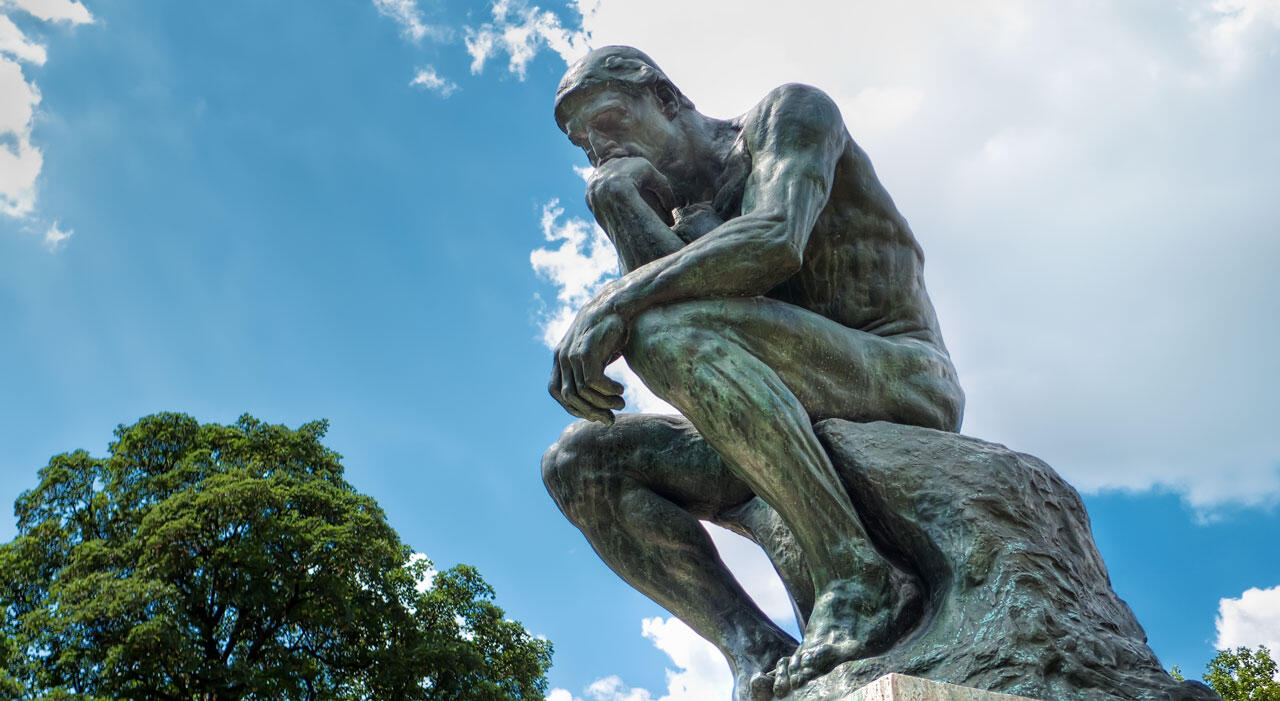
The Thinker is his most famous work, depicting a man sat with his chin on his hand. And whilst, when we think of twentieth-century sculpture, we might immediately think more of Pablo Picasso and Brancusi, Rodin is where it all started.
Christ the Redeemer
🌎 Location: Rio de Janeiro, Brazil
📆 Date of Creation: 1922
Rio de Janeiro’s famous image of Christ is one of the Wonders of the Modern World. We don’t know if it deserves quite this designation, but, as sculptures go, it’s pretty famous.
Standing high above the Brazilian city, this statue, like the Statue of Liberty in a way, communicates the values and ideals of the country in which it is placed.
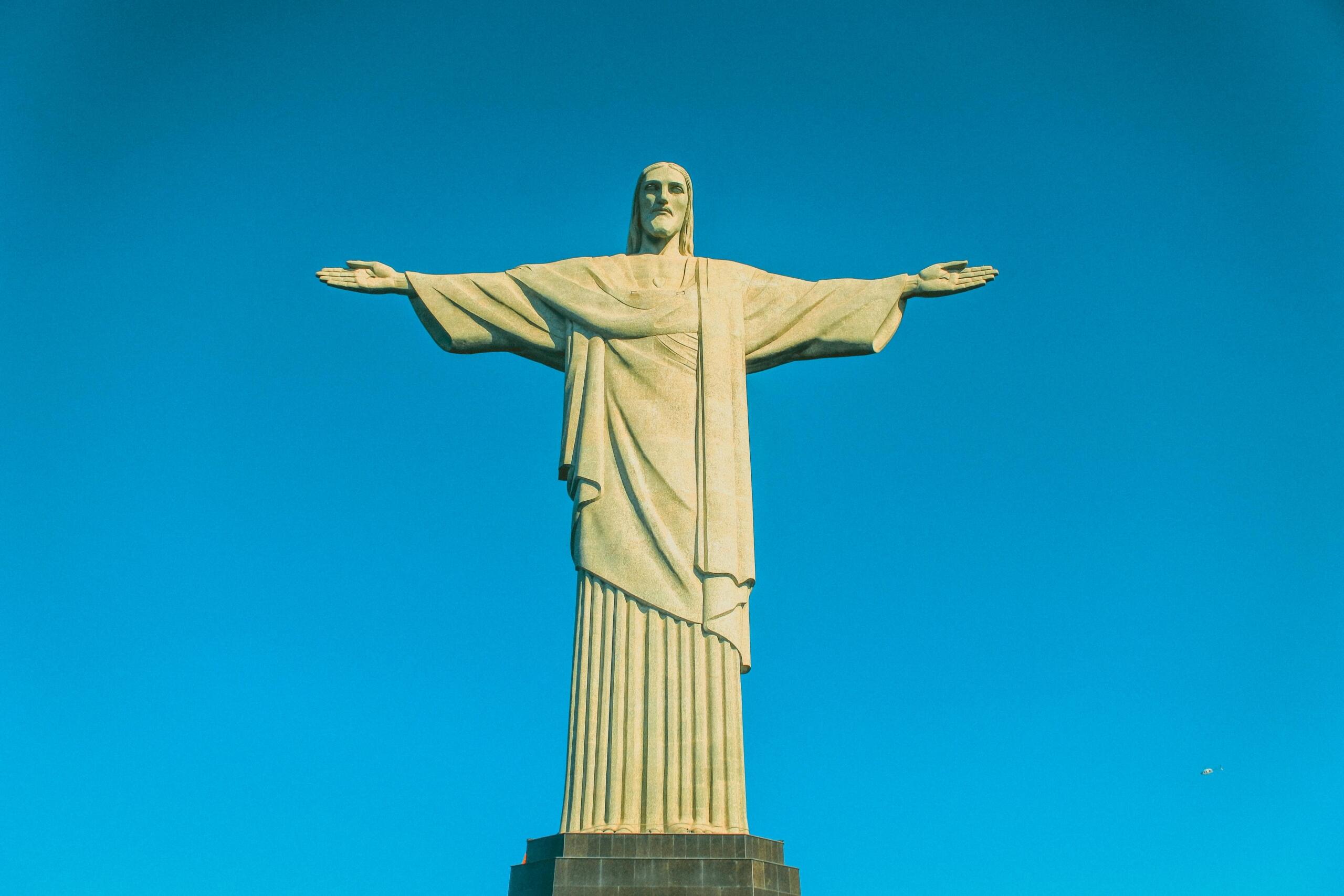
Venus of Willendorf
🌎 Location: Natural History Museum, Vienna, Austria
📆 Date of Creation: Around 25,000 BC
Discovered in 1908 and measuring just 4 inches, this famous sculpture belongs to the Upper Palaeolithic, and is specifically linked to the Gravettian people.
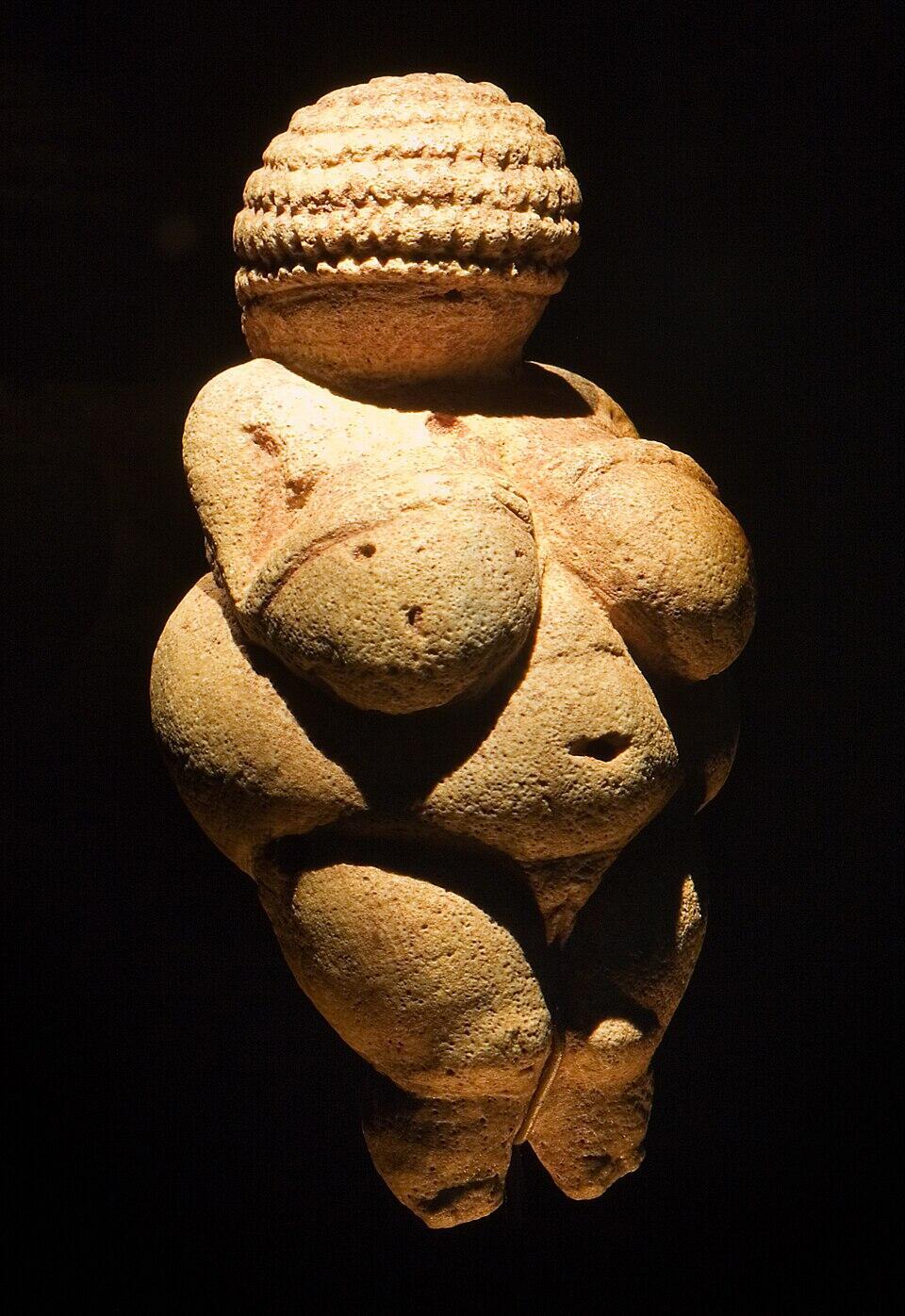
Estimated to be over 27,000 years old, the carving is made from oolitic limestone and is thought to symbolize nourishment and fertility; these kinds of sculptures were believed to be primarily used for rituals and spiritual purposes associated with those values.
It’s worth noting that far more female-shaped figures than males from that period have been found, suggesting fertility and the power to give life were cardinal in societies where life expectancy was much lower than today.
Although the statue is currently displayed in Vienna, recent studies aim to trace its origins as its oolitic stone doesn’t match nearby Austrian deposits within a 120 mile radius, hinting at a French or Italian origin.
The Venus of Willendorf likely traveled across what we now know as Europe over generations, reflecting its creators' nomadic, hunter-gatherer habits. Research into its origins is crucial for understanding connections between Central and Eastern Europe, ancient geography, and other similar figures discovered in Ukraine.
Terracotta Army
🌎 Location: Xi'an, China
📆 Date of Creation: 209
Today, the Terracotta Army in Xi’an, China, is recognized as one of the World's Eight Wonders. It comprises over 8,000 life-sized terracotta soldiers, each with unique facial features and headgear.
These sculptures also include figures of horses and chariots and were directly commissioned by China’s first emperor and founder of the Qin dynasty, Qin Shi Huang (259 BC - 210 BC), for spiritual protection in the afterlife.
Custom dictated that emperors be buried with servants, but Qin Shi Huang opted for terracotta instead—basically creating his mausoleum’s army.
Discovered by farmers in 1974, the site offers invaluable insight into ancient China's military and ritual practices.
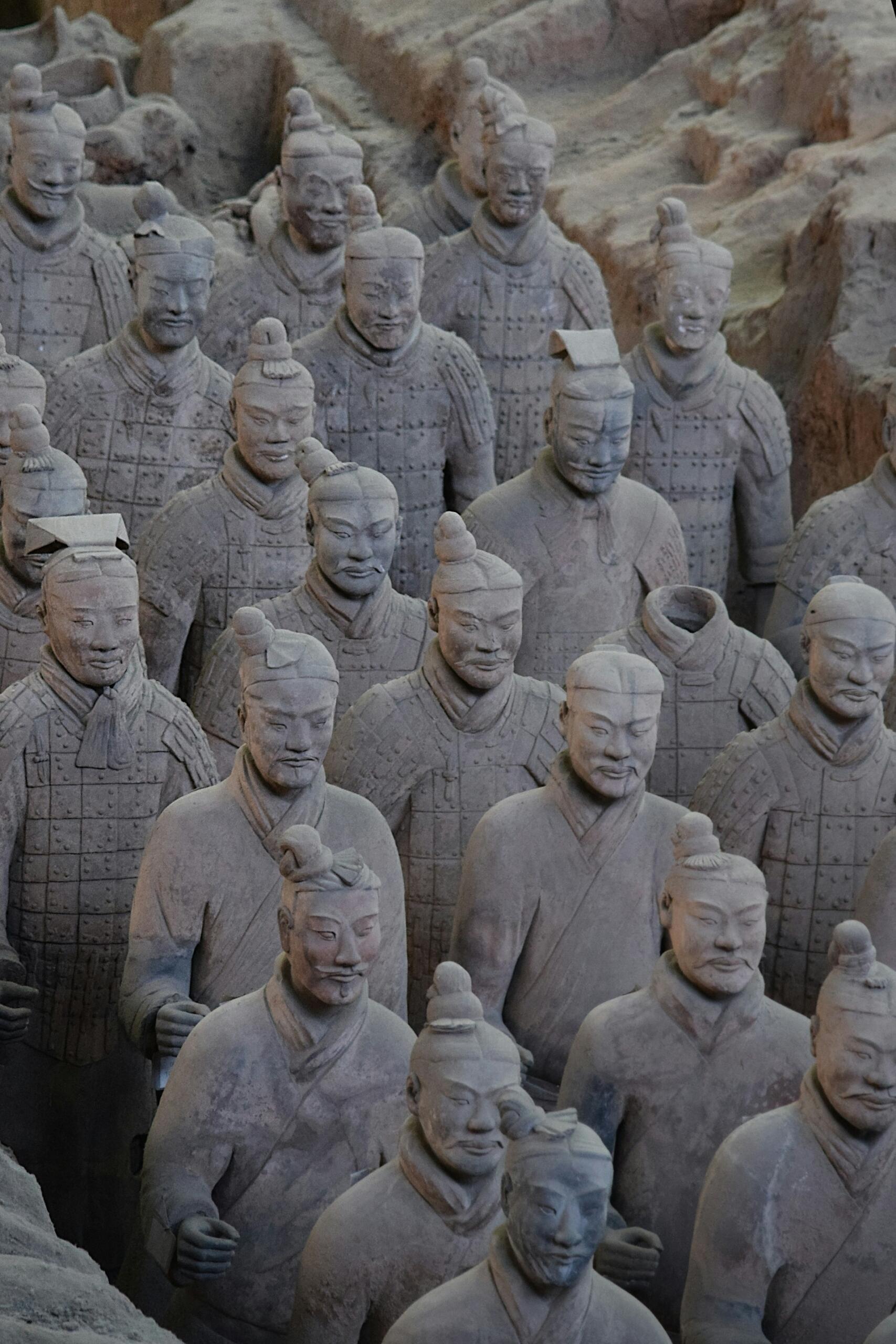
Originally painted in a red palette, the figures have lost most color over time. Some recognizable pieces include a famous headless soldier damaged during excavation, while others remain completely intact for over 2,000 years.
Moai Statues
🌎 Location: Easter Island, Chile
📆 Date of Creation: 1500 AD
In one of the most remote inhabited places on earth, Easter Island in the South Pacific, there are located 900 colossal stone monoliths carved from volcanic rock by the Rapa Nui people between the 13th and 16th centuries.

Their age, size (9–65 feet tall), and weight have long fascinated researchers. Many of these famous statues reveal only their heads today, while their bodies (some bearing petroglyphs) are still buried. The Moai sculptures are scattered across the island’s higher ground, indicating ceremonial significance. Archaeologists have linked their placement to island mythology, religious practices, and astronomical rites.
Although Easter Island is part of Chile today, one famous Moai statue is located elsewhere; for instance, the British Museum in London houses one that was subtracted from the island in the 19th century, and later donated by Queen Victoria. Much remains to be discovered from these famous sculptures—most recently, a monolith surfaced in 2023, exposed by drought around a volcanic lake.
The Pietà of Saint Peter’s
🌎 Location: St. Peter's Basilica, Vatican City
📆 Date of Creation: 1499
Michelangelo’s Pietà stands as one of the most moving and technically masterful sculptures of the Renaissance, carved from a single block of marble with breathtaking detail. Completed in just nine months, it reveals not only his extraordinary talent but also his ability to capture deep human emotion in stone.
Renaissance writer Benedetto Varchi once wrote that it seemed “not made of marble by a mortal hand, but divinely descended from Paradise,” while Giorgio Vasari, overcome with emotion, reportedly wept when he saw it and called it “a miracle.”
The scene of Mary holding the body of Christ is rendered with exceptional grace. Her calm expression and the natural fall of her robes speak volumes, making it one of the most recognizable and admired depictions of maternal sorrow in Western art.
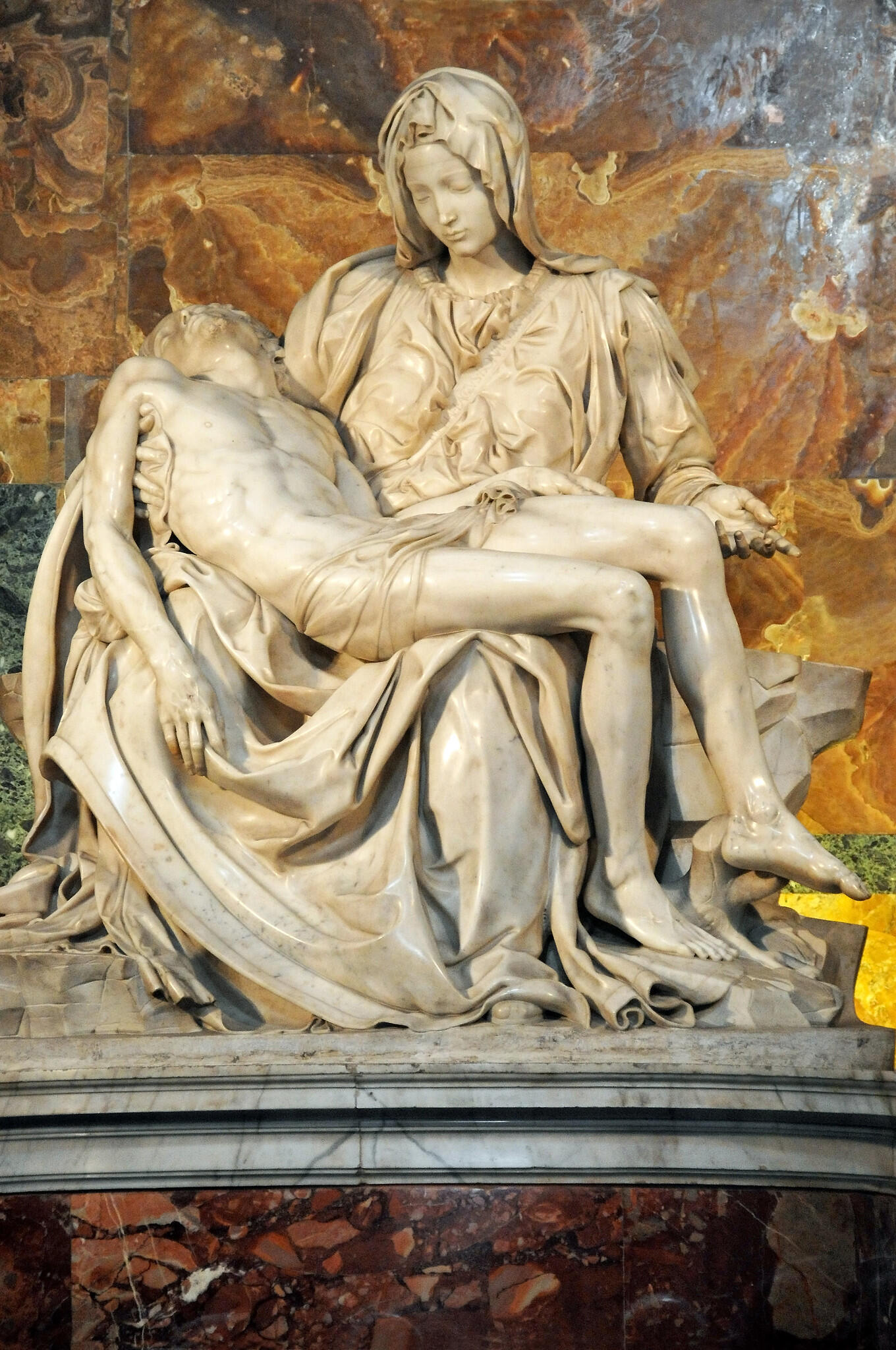
Now housed in the Vatican’s St Peter’s Basilica, the Pietà continues to inspire awe. It is Michelangelo’s only signed sculpture, bearing an inscription across Mary’s chest: “Michel Angelus Bonarotus Florentinus Faciebat.” For generations, this sculpture has stirred reflection, devotion, and admiration across the world.
Mother Ukraine
🌎 Location: Kyiv, Ukraine
📆 Date of Creation: 1981
Formerly known as the Mother Motherland Monument, this famous 331-feet-tall titanium statue stands on a hill at the Museum of the History of Ukraine in the Second World War in Kyiv.
Initially, Soviet plans in the 1950s envisioned two towering statues of Lenin and Stalin. These were abandoned in favor of a commanding female warrior, sword raised, shield in hand, honoring victory in WWII.
In 2023, the statue underwent a symbolic transformation. The Soviet hammer-and-sickle emblem on her shield was replaced with Ukraine’s national trident, the tryzub.
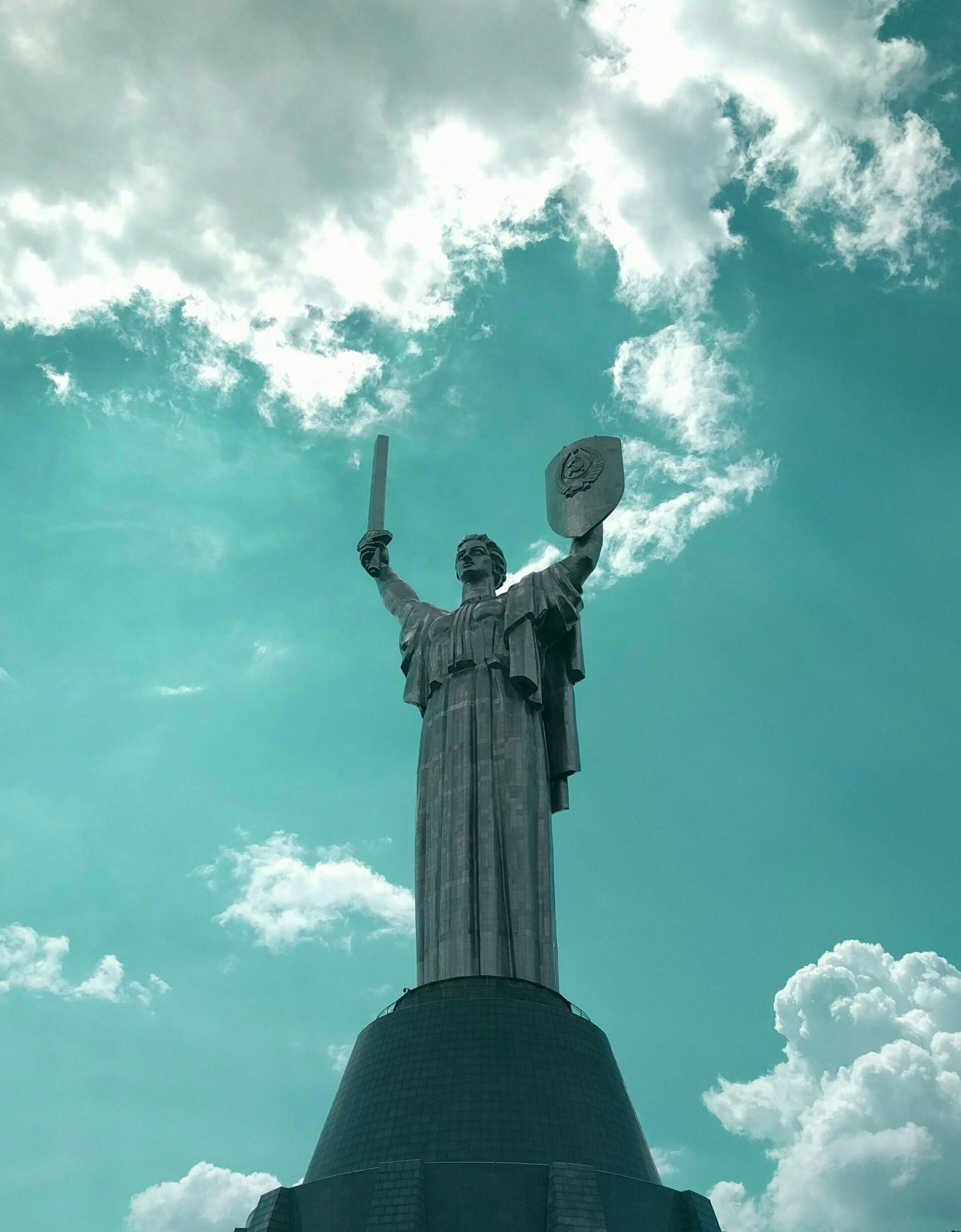
This powerful gesture marked a clear break from Soviet legacy and affirmed Ukraine’s national identity, resilience, and independence amid continuing struggles.
Spring Temple Buddha
🌎 Location: Henan, China
📆 Date of Creation: 2008
When thinking of monumental statues, we often picture Michelangelo’s David or Rio’s Christ the Redeemer—but the Spring Temple Buddha in China now stands among the tallest and most famous sculptures in the world at 420 feet.
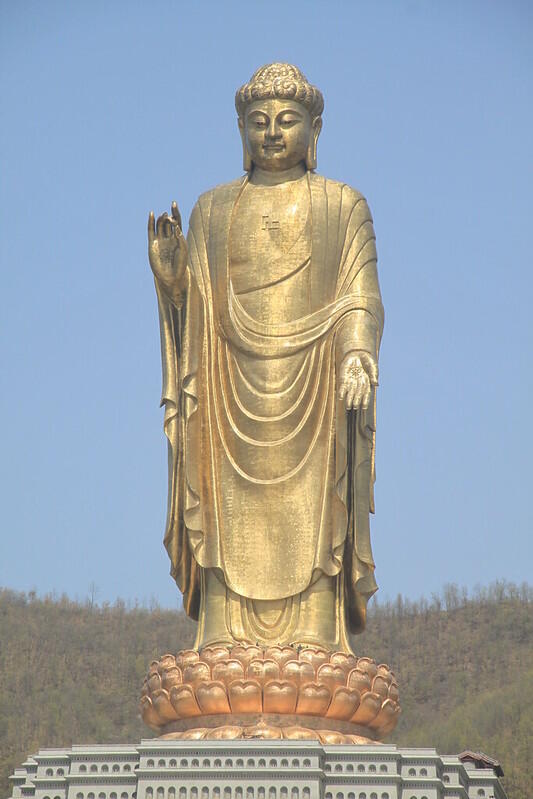
While the other two don't even make it to the top 10 of the biggest sculptures in the world!
Cast in copper, this Buddha sits atop Mount Yao in Henan—the cradle of Chinese civilization—and is intended to honor China's cultural heritage and contemporary prosperity.
Its construction took over a decade, it includes surrounding gardens, ponds, a Buddhist monastery, and over 6,000 smaller statues, creating a serene pilgrimage site that elevates Buddhism’s core values and spiritual healing.
In conclusion, the world’s best sculptures stand as timeless masterpieces, showcasing the creativity and skill of artists across centuries. From Michelangelo’s David to Rodin’s The Thinker, these iconic works continue to inspire and captivate art lovers everywhere. If you’re interested in learning more about sculpture or even creating your own, you can connect with an experienced art tutor on Superprof to help develop your skills. Don’t forget to vote for your favorite sculpture in our poll or share your personal top pick in the comments section below—we’d love to hear your thoughts!
What is your favorite sculpture?

